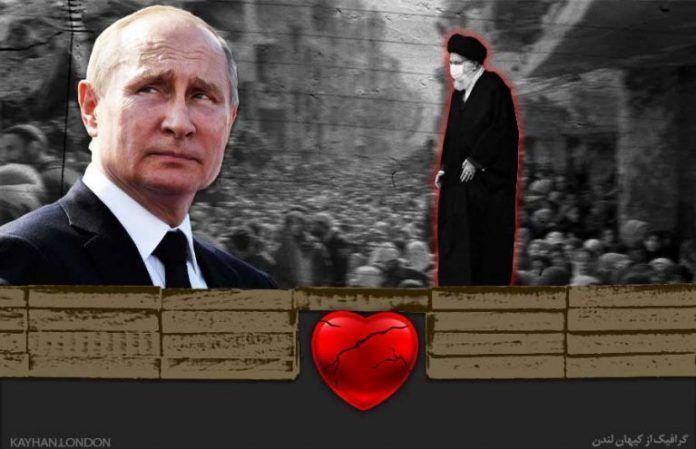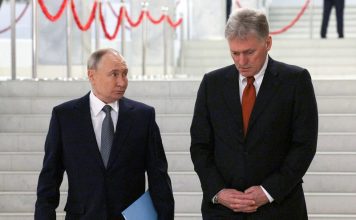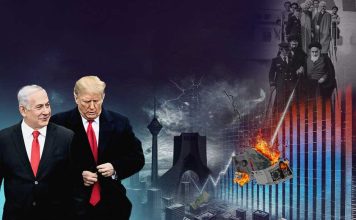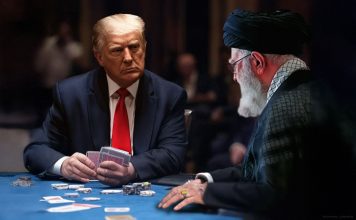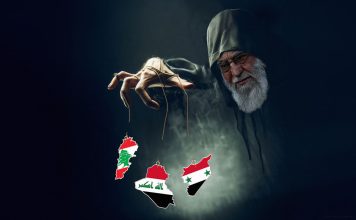By Ahmad Rafat
The relationship between Iran and Russia has been a story of love and hate and cooperation and rivalry. Although Tehran considers itself an equal partner in this affair, Moscow has the upper hand in all of their dealings and uses Iran as a mere pawn in its bigger game.
Tehran-Moscow relations should be viewed as part of Iran’s policy of “looking to the East,” promoted by Supreme Leader Ayatollah Ali Khamenei. It is a one-sided relationship, as was clear recently when Russian President Vladimir Putin gave a less than cordial response to Mr. Khamenei’s letter, and even barred the leader’s envoy from entering the Kremlin.
While China and Russia are Iran’s political and economic partners, Khamenei considers Moscow as the crucial ally in the anti-Western and anti-U.S. campaign which the Islamic Republic has been waging for the past 42 years.
Russia, meanwhile, does not consider Iran as a significant piece in its complex geopolitical chess game against the U.S.
The Speaker of the Majlis (Iranian Parliament), Mohammad Bagher Ghalibaf, hand-delivered a letter from Khamenei to the Kremlin, but President Putin reportedly refused to meet him. In the letter, Khamenei promised Putin never to betray him, adding that even if Iran were to enter talks with the U.S., he would always look to Moscow for guidance.
“No change in the White House will affect our ties [with Russia],” Khamenei said in the letter.
Russia and Iran have vastly different views of their ties.
Tehran plays no role in advancing Moscow’s macro foreign policy. Russia’s interest in Iran is focused on limited regional issues, for instance sharing the Caspian Sea coastline, tensions in the Caucasus, and involvement in the Syrian Civil War.
During a seminar held in Moscow in December, the Russian International Affairs Council (RIAC), a non-profit academic and diplomatic think tank, discussed the Moscow-Tehran relationship.
[contact-form][contact-field label=”Name” type=”name”][contact-field label=”Email” type=”email”][/contact-form]
RIAC was founded in 2010 on the orders of Russia’s then President Dmitry Medvedev to “facilitate Russia’s peaceful integration into the global community.”
The council also held a discussion titled “The Fallout of the U.S.-Iran confrontation for Russia: Revisiting Factors in Moscow’s Calculus.”
Some experts believe that a military conflict between Iran and the U.S. could help Russia, because the U.S. will have to move some of the troops currently stationed in Eastern Europe to the region. As a result, Russian troops would be under less pressure.
Keeping sanctions on Iran’s oil industry will also benefit Russia. Both countries rely heavily on their oil and gas-based economies. Russia could fill the vacuum created by the absence of the Iranian crude in the European energy market and boost its share of the global oil and gas market.
According to Russian experts, in the event of a war with the U.S., Iran would not hesitate to attack oil and gas fields in the Gulf States, strengthening Russia’s presence in the global energy market.
The rivalry between Moscow and Tehran is nowhere more evident than in Syria, where they both support President Bashar al-Assad’s government. However, Moscow and Tehran have different reasons and opposing aims for backing the Syrian regime.
By supporting Assad’s regime, Iran hopes to expand its influence in the region and use land corridors to support and strengthen Lebanese Hezbollah and control a Mediterranean port.
Russia has had a presence in Syria for many years. It has a military base in Hmeimim and a naval facility at the seaport of Tartus, both at Syria’s Mediterranean coast. Russia has secured U.S.’s agreement, which allows it to use these ports for trade after the Syrian war.
Iran has served as a useful ally to Russia in Syria, but its presence after the war could pose a problem for Moscow. Russia has been talking to the opposition groups in Syria for months. As part of its plan to sideline Bashar al-Assad, Moscow has even selected several potential candidates to run in the post-war presidential election in Syria.
Iran-backed militias and armed groups supported by Russia have clashed frequently in northern, southern, and eastern Syria since 2018.
In January, the Iran-backed Syria’s 4th Armored Division, under General Maher Al-Assad’s command, clashed with the Russian-backed Liwa Suqur al-Sahara, near the village of Hayaleen, in the western Hama Governorate. General Maher Al-Assad is President Bashar al-Assad’s younger brother.
Liwa Suqur al-Sahara, commanded by General Suheil Al-Hussein, is a private militia group fighting alongside the Syrian government military in the civil war. General Al-Hussein is reportedly one of Moscow’s candidates to head the Syrian armed forces after the war.
Iran-backed militias and armed groups supported by Russia have clashed several times in the last two years in the Daraa Governorate in southwest Syria. To broaden their influence within the local communities, each group has tried to assassinate the other’s senior commanders in recent months. Some 49 members of both groups have been killed in the past five months.
Mohammad Al-Khateeb, a Syrian journalist who lives in As Sanamayn, in the Daraa Governorate, told Kayhan Life: “The rivalry between Iran and Russia in Syria includes efforts to control strategic areas such as Nasib Border Crossing with Jordan and recruiting young Syrian men to join Iran-backed militias and Russia-backed paramilitary groups.”
“Local forces backed by Iran or Russia are trying to secure a place in post-war Syria by increasing their numbers and reorganizing themselves,” Mr. Al-Khateeb noted. “The clashes between these armed groups started immediately after Bashar al-Assad’s government signed an agreement with factions which opposed Russia’s role as a mediator.”
“The Syrian opposition groups consider Iran-backed forces as their enemy. They do not cooperate with the Islamic Revolutionary Guards Corps (IRGC) under any circumstances,” Al-Khateeb explained. “Russia wants Syrian opposition forces to play a significant role in rebuilding that country after the war.”
Iran-backed militias and paramilitary groups supported by Russia also fight over controlling territories around Deir Ez-Zur, the largest city in eastern Syria on the border with Iraq. The U.S. military and Israeli air force have bombed Iran-backed militias in this region in the past.
Iran has deployed its Fatemiyoun Division (Liwa Fatemiyoun), comprised young Afghan fighters to Deir Ez-Zur, in the past year. Also, Iraqi Shia militia groups, including Kata’ib Hezbollah and Kata’ib Sayyid al-Shuhada, have been deployed to Al Bukamal (Abu Kamal) in Eastern Syria.
Kata’ib Hezbollah and Kata’ib Sayyid al-Shuhada are part of the Popular Mobilization Forces (PMF), an Iraqi state-sponsored umbrella organization comprising some 40 militias that are mostly Shia Muslim groups but also include Sunni Muslim, Christian, and Yazidi groups.
Feras Allawi, the editor-in-chief of Al-Sharq News Website, told Kayhan Life: “After the Jan. 13 Israeli airstrikes, many Syrian fighters who had been paid $300 a month to fight alongside Iran-backed militias, have left the region. They have been recruited by Russia and paid $100 a month to fight as part of the Syrian 5th Armored Division under General Suheil Al-Hussein’s command. After a recent bombing by the U.S., many young Syrian fighters will leave Abu Kamal and join Russian forces.”
On Feb. 26, U.S. President Joe Biden approved a predawn attack on Iran-backed groups operating on Deir Ez-Zur. The airstrike was in retaliation for attacks on U.S. bases in Erbil, a city in the Kurdish region of Iraq, on Feb. 16, which killed a civilian contractor and injured at least five other U.S. service members.
“The Fatemiyoun Division has moved its headquarters to other buildings in the center of the city,” Mr. Allawi noted. “Although Russia has condemned the U.S. attacks, Moscow did not share advanced warning it received before the bombings from the U.S. and Israel with Iran. Russia is the true beneficiary of attacks on Iran-backed militias.”
Speaking to the U.S.-based Al-Monitor news website, Muhammad Adib, a researcher based in Idlib, said: “Tensions are escalating between Russia and Iran in Deir Ez-Zur. Naturally, Russia will take advantage of Iran’s diminishing influence and strengthen its influence in the region.”
“Fearing air raids by the U.S. and Israeli forces, young Syrians prefer to work with the Russian military. They have concluded that Iranian forces will be driven out of Deir Ez-Zur soon,” Mr. Adib added.
This article was translated and adapted from Persian by Fardine Hamidi

